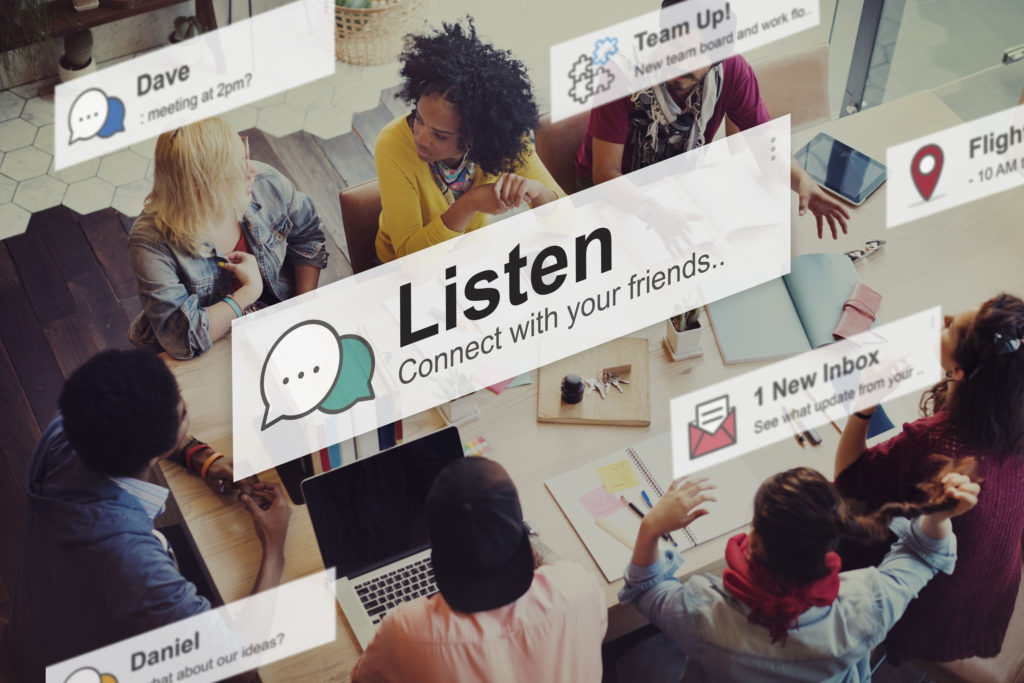Social listening is like having a superpower in the digital age. But what exactly is it? In simple terms, social listening research is the process of monitoring social media channels for mentions of your brand, competitors, product, or any relevant keywords. It’s more than just hearing; it’s about understanding what people are saying and how they feel about it.
Why is social listening important today? With the rise of social media, consumers are more vocal than ever. They share their experiences, both good and bad, and expect brands to listen and respond. Ignoring these conversations can lead to missed opportunities and potential PR disasters. Social listening helps businesses stay in tune with their audience, adapting and responding in real-time.
Social Listening Research: The Key to Understanding Brand Perception

The Evolution of Social Listening
1. Historical Context
Back in the day, businesses relied on surveys and focus groups to understand customer sentiments. While these methods are still valid, they are limited in scope and timeliness. Social media changed the game entirely. It provided a platform where millions could voice their opinions instantly. Social listening evolved as a necessary tool to harness this vast sea of information.
2. The Rise of Social Media and its Impact
The explosion of social media platforms like Facebook, Twitter, Instagram, and LinkedIn has made it imperative for businesses to adopt social listening. These platforms are where the bulk of consumer conversations happen, influencing purchasing decisions and brand perceptions. Social listening allows companies to tap into these conversations, offering insights that are invaluable for strategic planning.
Key Components of Social Listening Research
1. Data Collection
Data is the foundation of social listening research. It involves gathering information from various social media platforms, blogs, forums, and online reviews. This data can include mentions, hashtags, comments, and shares related to your brand.
2. Data Analysis
Once collected, the data needs to be analyzed to uncover patterns, trends, and sentiments. This step is crucial as it transforms raw data into meaningful insights. Advanced tools and software help in identifying key themes and measuring the sentiment around them.
3. Reporting Insights
The final step is reporting. Presenting the insights in an understandable format helps stakeholders make informed decisions. Dashboards, visualizations, and reports are often used to communicate the findings effectively.
Benefits of Social Listening Research
1. Understanding Customer Sentiments
One of the primary benefits of social listening is gaining a deep understanding of how customers feel about your brand. This insight helps in tailoring marketing strategies and improving customer service.
2. Identifying Trends and Opportunities
Social listening can reveal emerging trends and potential opportunities in the market. By staying ahead of the curve, businesses can innovate and stay competitive.
3. Enhancing Customer Engagement
Engaging with customers in real-time by acknowledging their feedback and addressing concerns strengthens brand loyalty. Social listening facilitates this interaction, making customers feel heard and valued.
Social Listening Tools
1. Popular Social Listening Platforms
There are several tools available for social listening, each with unique features. Popular platforms include AIM Insights, Brandwatch, Sprout Social, and Mention. These tools help in monitoring conversations, analyzing data, and generating reports.
2. Choosing the Right Tool for Your Needs
Selecting the right tool depends on your business needs, budget, and the platforms you want to monitor. It’s essential to choose a tool that integrates well with your existing systems and offers scalability.
Implementing a Social Listening Strategy
1. Setting Clear Objectives
Before diving into social listening, it’s crucial to define what you want to achieve. Are you looking to improve customer service, manage your brand’s reputation, or gain competitive insights?
2. Defining Your Target Audience
Knowing your audience helps in filtering relevant data and focusing on the conversations that matter most to your business.
3. Integrating Social Listening with Other Strategies
Social listening should complement your broader marketing and business strategies. Integrating insights from social listening into your campaigns can significantly enhance their effectiveness.
Challenges
1. Data Privacy Concerns
With great power comes great responsibility. Handling consumer data requires compliance with privacy laws and ethical considerations. It’s crucial to be transparent about how data is collected and used.
2. Handling Negative Feedback
Not all feedback will be positive. Social listening helps in identifying and addressing negative feedback before it escalates into a bigger issue.
3. Managing Information Overload
The sheer volume of data can be overwhelming. Effective social listening requires filtering and prioritizing information to focus on what truly matters.
Best Practices
1. Continuous Monitoring and Adaptation
The digital world is ever-changing. Continuous monitoring and adapting to new trends and conversations ensure that your brand remains relevant.
2. Collaboration Across Departments
Social listening isn’t just for the marketing team. Insights gained can benefit sales, customer service, and product development, fostering collaboration and innovation.
3. Leveraging Insights for Decision Making
The ultimate goal of social listening is to inform decision-making. By leveraging insights, businesses can make data-driven decisions that align with consumer expectations and market demands.
Case Studies
Brand A: Turning Feedback into Innovation
Brand A used social listening to identify common customer pain points. By addressing these issues, they improved their product and increased customer satisfaction significantly.
Brand B: Crisis Management through Social Listening
During a PR crisis, Brand B utilized social listening to gauge public sentiment and respond appropriately, minimizing the damage and restoring their reputation.
Future Trends
1. Emerging Technologies and Trends
The future of social listening is bright, with advancements in AI and machine learning. These technologies promise more accurate sentiment analysis and predictive insights.
2. The Role of AI in Social Listening
AI is set to revolutionize social listening by automating data collection and analysis, providing deeper insights faster and more efficiently.
Conclusion
Social listening research is no longer optional in today’s digital landscape. It’s a vital tool that empowers businesses to understand and engage with their audience effectively. By integrating social listening into your strategy, you can unlock opportunities for growth, innovation, and enhanced customer relationships. If you’re ready to see the power of social listening in action, request a demo from AIM Technologies today and discover how our solutions can transform your business insights and decision-making.
FAQs
What is the difference between social listening and social monitoring?
- Social listening involves analyzing conversations and trends, while social monitoring focuses on tracking mentions and responses.
How can small businesses benefit from social listening?
- Small businesses can use social listening to understand customer needs, improve products, and build strong relationships with their audience.
What are the challenges of using social listening tools?
- Challenges include data privacy concerns, managing vast amounts of data, and interpreting the insights correctly.
Can social listening help in crisis management?
- Yes, social listening allows brands to identify and address negative feedback quickly, helping manage potential PR crises effectively.
Is social listening expensive?
- Costs vary depending on the tools and scale of monitoring. However, the insights gained often justify the investment by driving better business outcomes.




